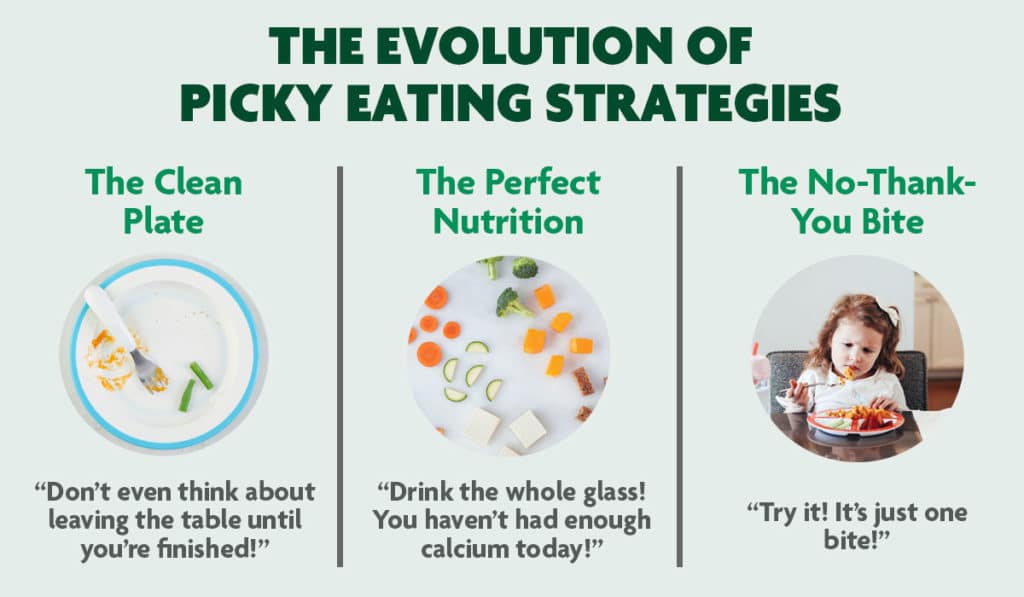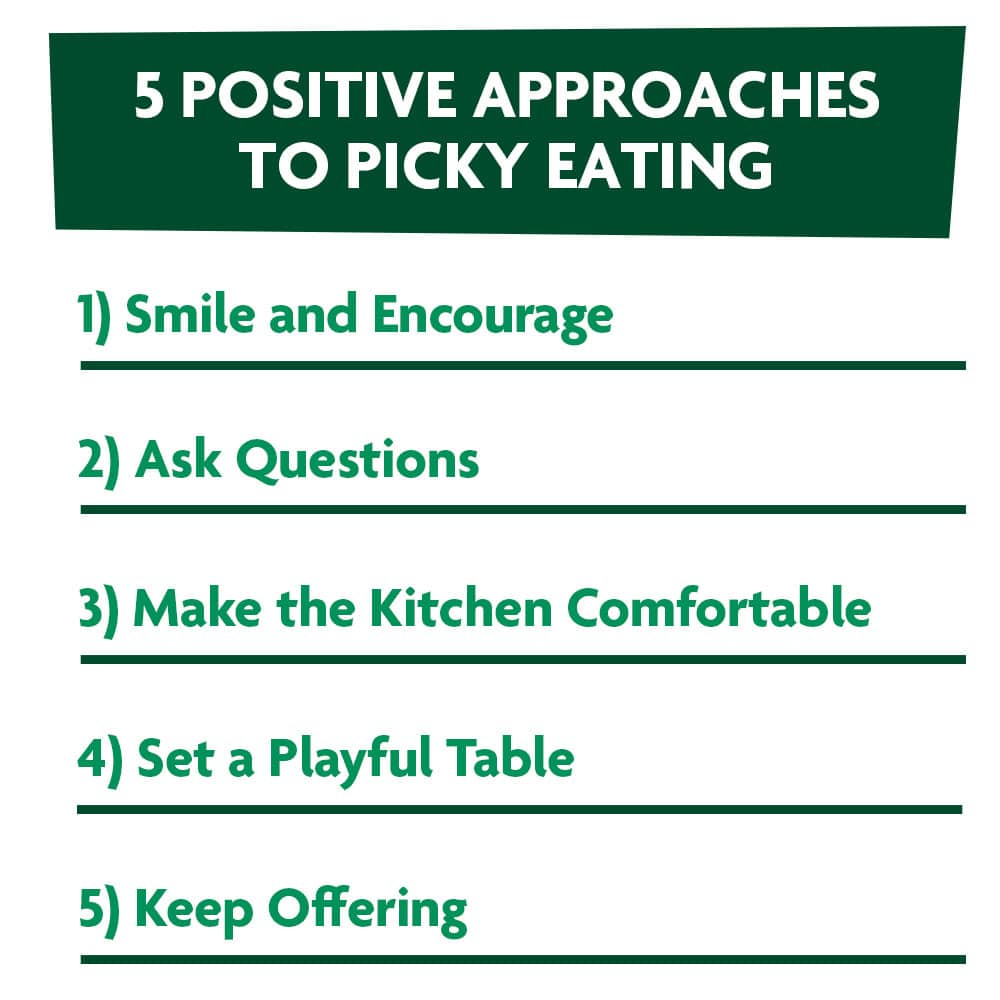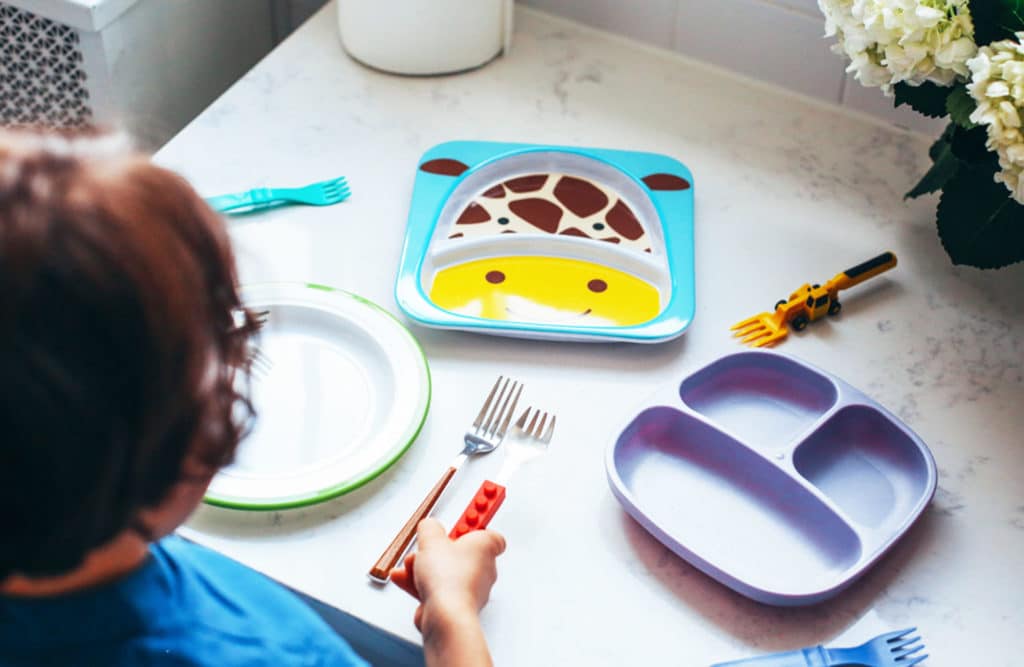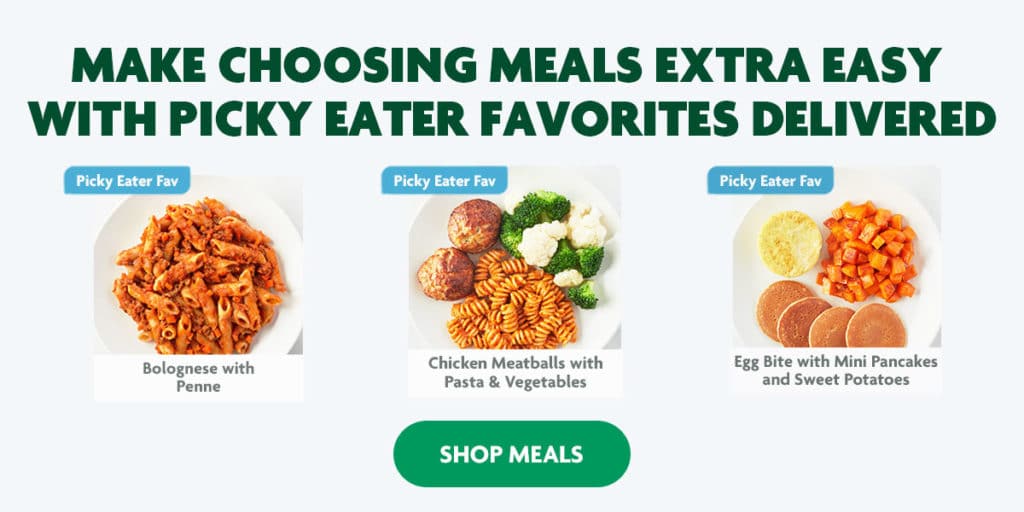No Pressure, No Problem: Parenting Picky Eaters With Less Stress
It’s no surprise that parenting evolves as new research comes out, technology advances and general attitudes change. As much as family life has changed over recent decades, however, one area continues to be a daily (and even hourly!) struggle for many of us with young kids—and that’s picky eating.
Fortunately, the approach to parenting picky eaters is moving in a positive direction. Let’s first look at where we’ve been to show why and how to bring less pressure and more positivity to your dinner table.
The Evolution of Picky Eating Strategies
To envision the picky eating techniques of the past, we can think back to our own childhoods, where many of us likely experienced similar attitudes:

The Clean Plate
“Don’t even think about leaving the table until you’re finished!”
While the thought behind this strategy is good (i.e., no waste), the execution leaves much to be desired. It makes a child’s plate the enemy and encourages children to ignore their own feelings of fullness. In a world where portion sizes are constantly growing, a clean plate can be an unhealthy target!
The Perfect Nutrition
“Drink the whole glass! You haven’t had enough calcium today!”
We all want our kids to get a varied diet with the right nutrients, but this desire can go too far—leading parents to obsess over exact vitamin/mineral intake, “normal” growth charts and other fine-point details. When parents model food anxiety, you can be certain that the kids take notice, either inheriting that anxiety themselves or pushing against such rigid rules.
The No-Thank-You Bite
“Try it! It’s just one bite!”
You may have a different name for this, but you know the approach: your child must try at least one bite before deciding yes or no. While the no-thank-you bite strategy does have some positive elements (like a focus on politeness and choice), it still primes kids for the no. They may take a bite out of obligation, but many have already made up their minds that they aren’t going to like it.
So What to Do With a Picky Eater? 5 Ways to Take a Positive Approach
The main problem with the above-mentioned strategies is the same: they set an antagonistic tone for meals, automatically framing mealtime as battle-time! Plus, recent research suggests that pressure-filled strategies like these don’t work—this 2018 study in Appetite has shown that parental pressure does not improve picky eating behaviors in toddlers.
Where negative reinforcement doesn’t work, a positive approach does. A no-pressure strategy not only makes parenting picky eaters less stressful, but it also helps kids develop a naturally positive relationship with food. Here are five ways to focus on a happy and healthy mealtime environment:

1. Smile and encourage.
Whenever you offer a new food, do it with a smile! Encourage your little one to try it without bartering or pleading. When your child does accept a new food, continue to positively reinforce with more smiles and acknowledge what a good eater they are. The more they associate eating with these emotions, the easier it will be to continue introducing new foods. If your child refuses altogether and doesn’t want to eat the meal, don’t worry too much. They will eat when they are hungry. There is no need to offer something different and, in fact, you shouldn’t. It’s important to establish that this is tonight’s dinner and you’re not a short order cook.

2. Ask questions.
If your child has refused a food (either before or after trying it), find out why. Take a curious tone that avoids leading or closed questions; instead of asking, “Isn’t it delicious?” or, “Don’t you love it?” try one of these:
- What did it taste like?
- What other foods does it look/taste/smell like?
- Is it sweet or salty? Crunchy or chewy?
The more you know, the better prepared you’ll be for next time.
3. Make the kitchen comfortable.
Although picky eating is often expressed as a reaction to food, it can actually be caused by environmental discomfort as well. You can help your kids feel more at home in their dining environment by:
- Involving them in mealtime, from ingredient preparation to final plating
- Making the fridge, pantry and kitchen more kid-friendly
Allowing them to choose what’s for lunch or dinner (or which premade meals to order for the week)
4. Set a playful table.
Wondering what to do with a picky eater? Help them find some fun at the table! Let them choose their favorite picky eater utensils or create an imaginative story involving mashed potato towers and zucchini dragons. The more fun, the better.

5. Keep offering!
It often takes 6–15 times for a child to accept a new food, and that number can be higher for extremely picky eaters. Keep offering with no pressure, and eventually that new food won’t be so scary.
Building a Lifelong Positive Relationship with Food
At Nurture Life, we love the no-pressure approach because it’s no longer about just a single bite—it’s about creating habits that will encourage better eating for a lifetime.
Despite wanting to build a future generation of better eaters, Nurture Life realizes it’s about getting your kid to eat today. Our meals offer busy parents a way to feed their kids healthier while keeping kids’ perspectives and palates in mind. We even make specially designed meals for picky eaters! If you still have questions about how to help your picky eater, contact Nurture Life’s child nutrition experts today. Just send us a message at nutrition@nurturelife.com.


